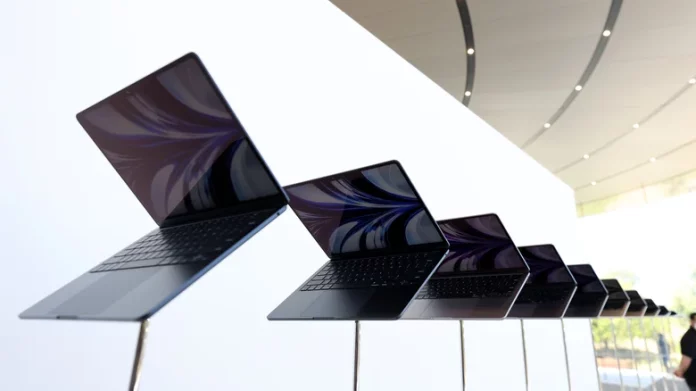Apple has redesigned the iPhone 17 Pro models from the inside out, focusing much of the engineering around the camera plateau. To address overheating issues seen in the iPhone 15 Pro and iPhone 16 Pro, the company introduced a new vapor chamber cooling system, which has proven far more effective than traditional fan-based cooling.
Encouraged by the success of this system, Apple now appears to be expanding the technology to other product lines. According to Bloomberg’s Mark Gurman in his Power On newsletter, the next-generation iPad Pro could be the first non-iPhone to benefit from a vapor chamber cooling setup.
Gurman also suggests this innovation might not stop there. If the vapor chamber performs well on the iPad, Apple could extend the same approach to the fanless MacBook Air. Doing so would significantly enhance performance while minimizing thermal throttling—an issue observed with the latest M5 MacBook Pro.
Why Apple Should Add a Vapor Chamber Cooling System to the MacBook Air
In its fifth generation of Apple Silicon, the MacBook lineup is starting to show its thermal limits. Recent performance tests comparing the M4 and M5 MacBook Pro models revealed that the newer chip tends to run hotter and throttle under heavy workloads. The base-model MacBook Pro’s single-fan cooling system no longer delivers the same efficiency as in previous generations.
Since the MacBook Air uses the same chip as the base MacBook Pro—but without any fan at all—Apple faces a design dilemma. To maintain the Air’s silent operation without compromising performance, the company may need to implement new cooling technology. A vapor chamber would be the ideal solution, preserving the Air’s iconic thin design while allowing it to fully harness the potential of Apple Silicon.
A Redesigned MacBook Air Could Bring More Than Just Better Cooling
If Apple follows its usual rollout pattern, the iPad Pro’s vapor chamber system could debut around 2027, aligning with the company’s 18‑month product update cycle. The MacBook Air might then adopt the technology a year later, around 2028, following a full redesign. Current rumors point to several major upgrades in that generation, including an OLED display, 5G connectivity, and possibly a touchscreen option.
As Apple continues to converge performance, portability, and design, adding vapor chamber cooling to the MacBook Air would mark a significant leap forward in efficiency and reliability. BGR will continue monitoring reports on Apple’s long-term plans for the MacBook Air and update readers as new details emerge.





